Zadar: Contracts For Social Entrepreneurship Worth HRK 10 Million Presented
ZAGREB, 12 March, 2021 - Labour Minister Josip Aladrović and deputy director of the National Foundation for Civil Society Development Luka Bogdan presented eight contracts in Zadar on Friday worth nearly HRK 10 million for projects to strengthen the capacities of old and new social enterprises and entrepreneurs.
"Today, we signed contracts with entities that are just starting and that are developing their business in accordance with principles of social entrepreneurship," said Labour, Pension System, Family and Social Policy Minister Josip Aladrović, noting that the ministry has provided over HRK 112 million to encourage social entrepreneurship.
The pandemic and crisis have created an opportunity for doing some things better and fairer, he said.
I believe that we can find a way in our business to regain a positive social impact. There are four counties among the co-signers: Zadar, Šibenik-Knin, Split-Dalmatia and Lika-Senj counties. All forms of entrepreneurship in these areas are more important than ever before, mostly due to the impact the pandemic has had on the tourism sector and all related activities, Minister Aladrović said, adding that by signing the projects they want to strengthen the capacities of old and new social enterprises through additional employment and education.
Deputy director of the National Foundation for Civil Society Development Luka Bogdan said that social entrepreneurship was one of the models connecting solidarity and entrepreneurship that could be seen every day, not just in a crisis.
The purpose of the projects is to employ members of vulnerable groups -- women, Croatian war veterans and victims of the Homeland War, people with disabilities and others, and this will include creating new jobs and improving the knowledge and skills of employees through specialised forms of training and employment.
Before presenting the contracts cofinanced by the European Social Fund, Minister Aladrović and his associates had a working meeting with representatives of the City of Zadar on increasing capacities of retirement homes.
According to state secretary Marija Pletikosa, it is estimated that about 5% of the population aged over 65 needs accommodation in a retirement home, and Zadar has not yet reached the capacity to accommodate 3%, so it is necessary to build new retirement homes.
Aladrović said that he supported the idea because increasing the number of accommodation units for the elderly population across Croatia was one the priorities of his ministry.
For more about business in Croatia, follow TCN's dedicated page.
PHOTOS: Outstanding Contemporary Croatian Architecture of the Year
February 10, 2021 – 10 of the most outstanding examples of contemporary Croatian architecture have been selected by the Association of Croatian Architects to compete in the extremely prestigious Mies van der Rohe Awards. Held only once every two years, they are the European equivalent of the Pritzker Prize for Architecture.
The Mies van der Rohe Awards are a really big deal. The greatest works of European architecture compete for recognition in the competition. The greatest success of Croatian architecture in the awards was attained by UP studios' Toma Plejić and Lea Pelivan, who received a special award for upcoming architects and had their high school in Koprivnica named the best building in that category in 2009. The success has had a considerable impact on their careers since.
Being held only once every two years, Croatian architecture projects completed since the closure of entries for the 2019 awards are eligible to be submitted. Here are the outstanding examples of contemporary Croatian architecture that will represent the country in 2022.
Cinema Urania Zagreb
An old neighbourhood cinema built into the back streets near Kvatric. In their redesign, 3LHD preserved the best features from this early example of concrete engineering in Croatian architecture. They added a glass pavilion at the entrance, atriums and skylights, flooding the former darkness with the natural light needed for its new purpose as an event and work space. © Jure Živković
© Jure Živković
Grand Park Hotel, Rovinj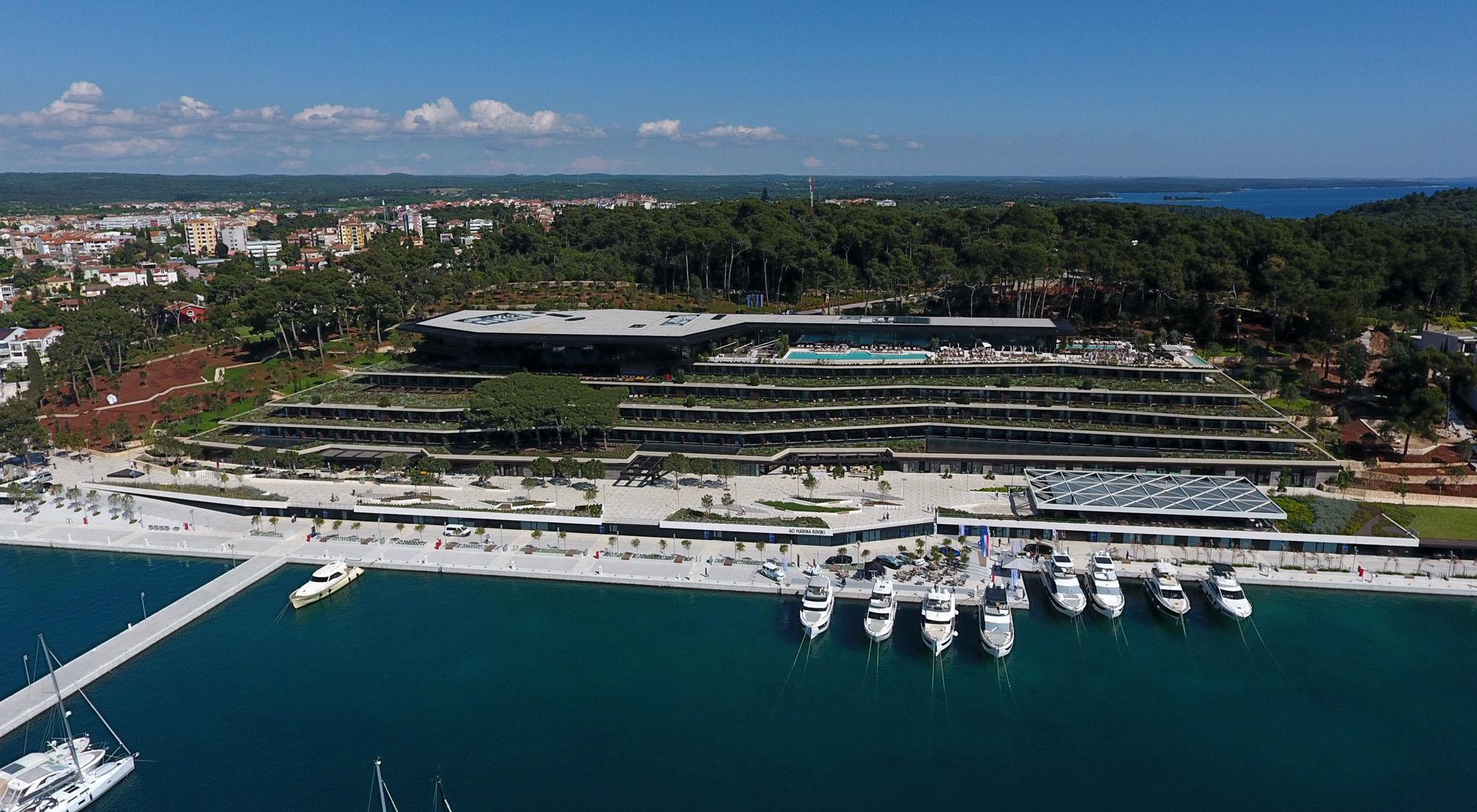
Sprawling widely across six stepped levels, the new luxury Grand Park Hotel and spa could easily have looked a long swipe of concrete. But, by places greenery on each of its staged roofs, architects 3LHD have ensured that no matter where you are in the 500-guest-capacity building, your view places you within a garden, looking out onto Rovinj Old Town and the expanse of the Adriatic. Croatian architecture at its most breathtaking. © Alukoenigstahl hr
© Alukoenigstahl hr
Ivanja Reka Elementary School, south Sesvete, east Zagreb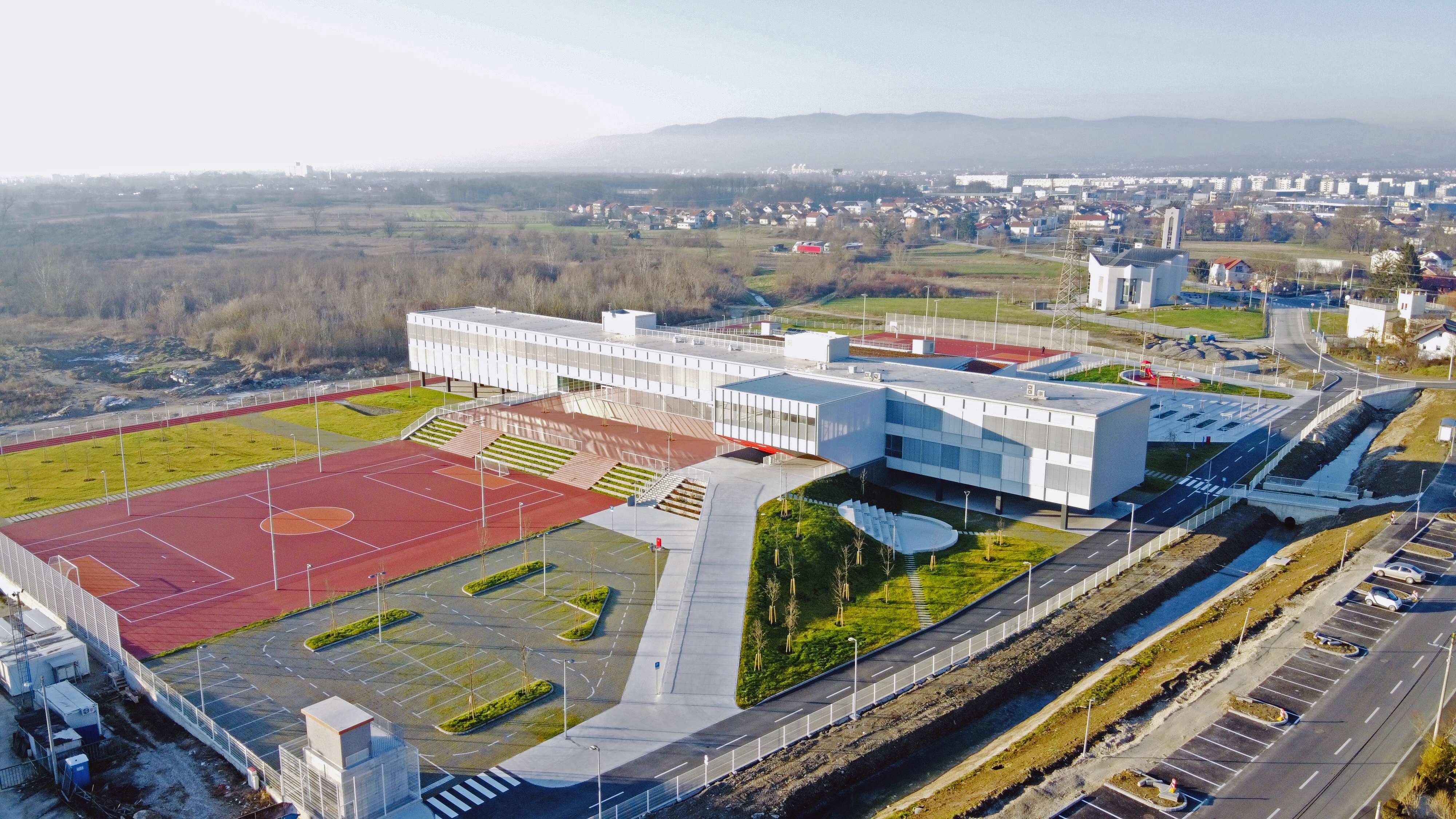
If every elementary school looked as pretty and was as well equipped as Ivanja Reka Elementary School in the south of Sesvete, eastern Zagreb, you could well believe daily attendance would never drop below 100%. Designed by a team of architectural authors (SUBMAP studios Marija Burmas and Ivo-Lola Petrić, and Jakša Kalajžić from JKA Arhitekti), the multi-level main building sits centrally, surrounded by sports, recreation and other facilities creating an impressive view for both those outside and within.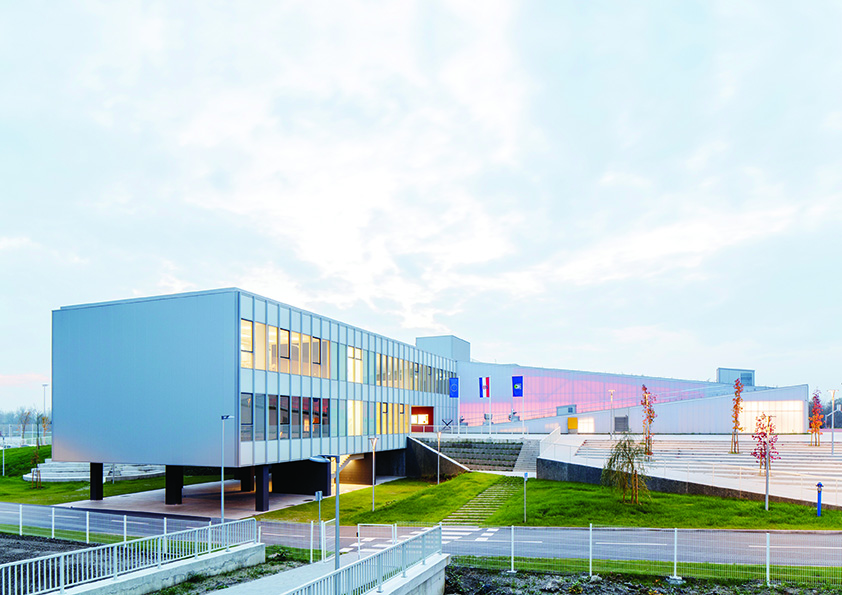 © Ivanja Reka Elementary School / Domagoj Blažević
© Ivanja Reka Elementary School / Domagoj Blažević
Roxanich Wine & Heritage Hotel, Motovun, Istria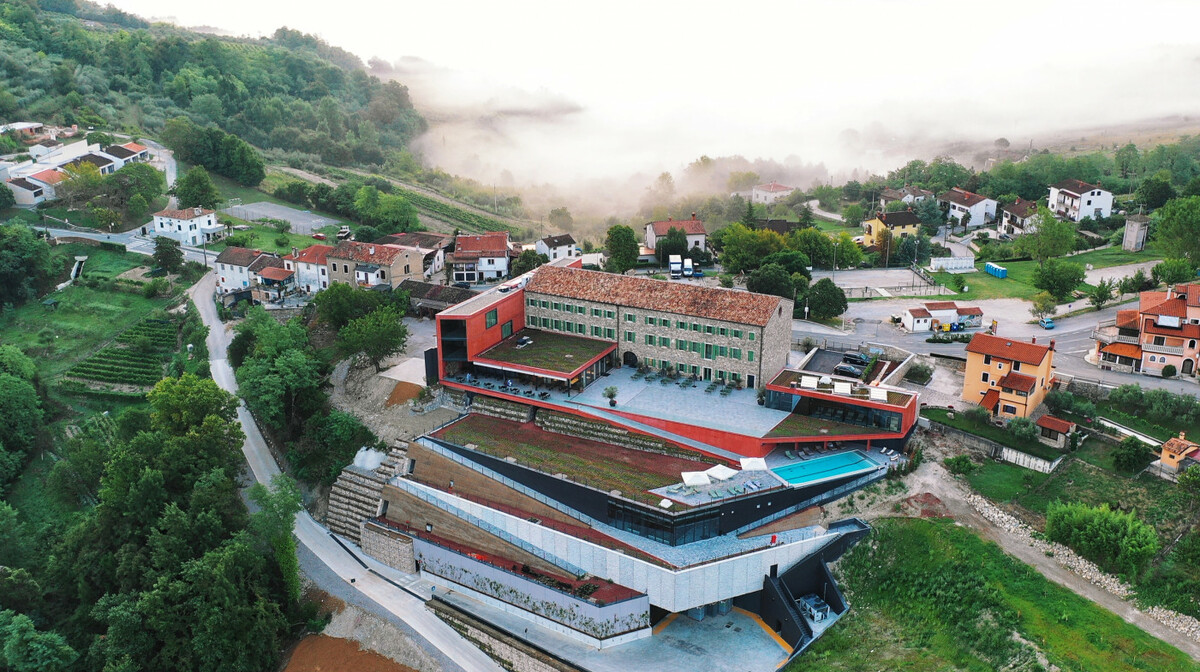
The view is unmistakably Istria. Vineyards carpet the land below and - rising above - the picturesque hilltop town of Motovun. Helmed architecturally by consistently bold Rijeka designer Idis Turato, this multi-level, multi-purpose redesign retains the traditional feel of its existing stone building and its purpose – there's a huge wine cellar beneath – but has opened up the space to give stunning views, not least over a sun deck that spectacularly reflects the sunrise and sunset. This is an active winery, with works and equipment all housed within its lower floors, not that you could tell from the 25 person capacity boutique hotel, restaurant and wine shop upstairs. © Roxanich.hr
© Roxanich.hr
Four Houses for Four Brothers, Diklo, Zadar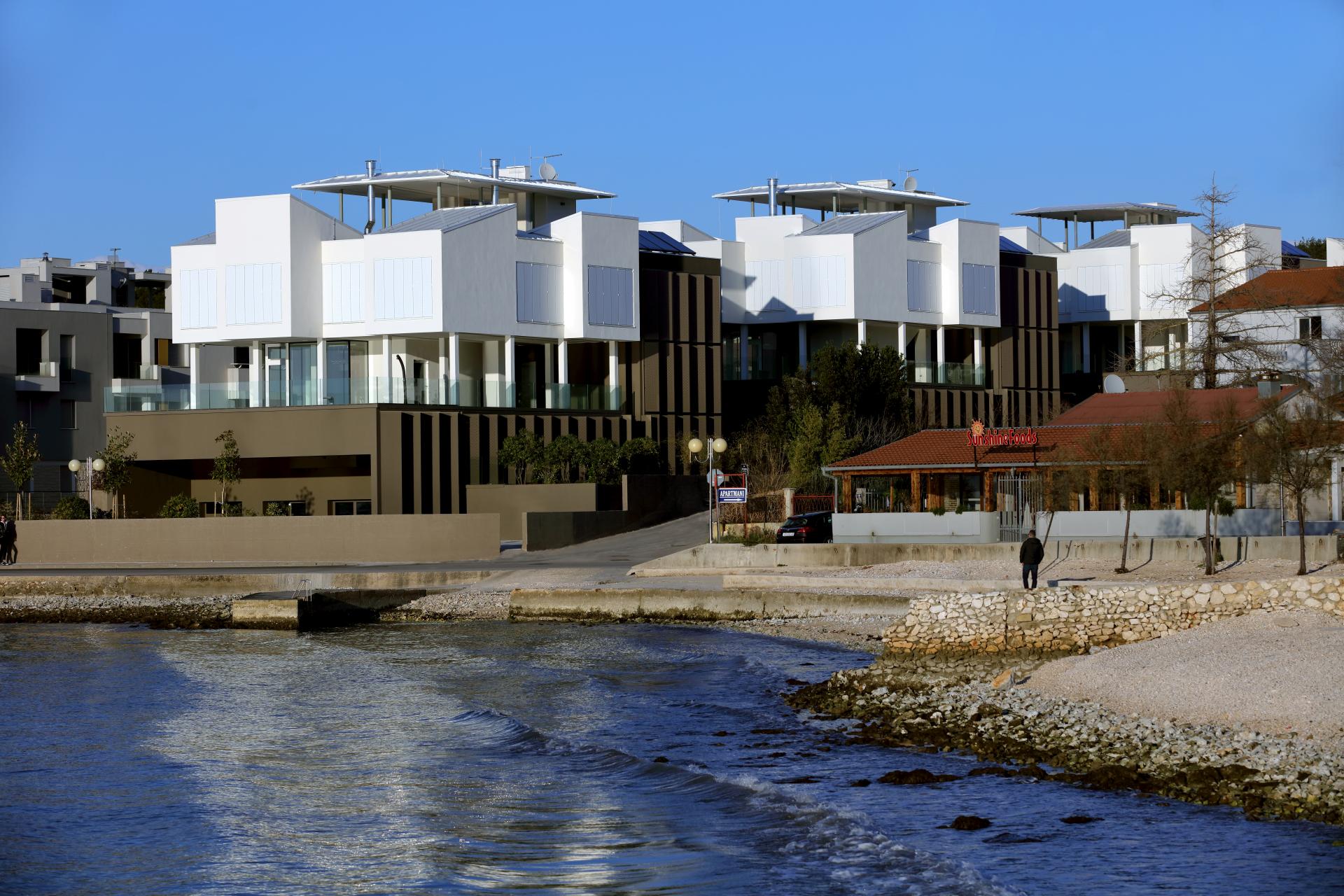
Judging from a theme of project titles used by architects Iva Letilović and Igor Pedišić, we're not sure that Four Houses for Four Brothers was actually commissioned by four brothers or that four live there. But, you could well believe they could. The ultra-modern set of independent houses, located next to a beautiful stretch of coast in a north Zadar neighbourhood, was specifically designed to address a distinctly Croatian reality – how to open up some of your dwelling to seasonal guests while you remain at home. The design separates the buildings clearly into separate quarters which allow privacy, comfort and minimal encroachment for both visitors and residents. © Igor Pedišić
© Igor Pedišić
Galić Winery, Kutjevo
Award-winning outfit Zagreb-based studio Dva arhitekta have an existing, jaw-dropping design for a rural winery commissioned by famous makers Galic. However, that project, as yet, remains unrealised. But, their winery for Galic in the centre of Kutjevo town is complete. Melding the traditional and the contemporary, the upper section of the building is a bold and unblemished red brick, adorned with the winemaker's unmistakable logo. Beneath, concrete arches invite your eyes into the actual wine cellar – neat rows of barrels, protected behind glass walls that are set back from the facade. Brilliant! © Damir Fabijanić
© Damir Fabijanić
Seecel Centre, Zagreb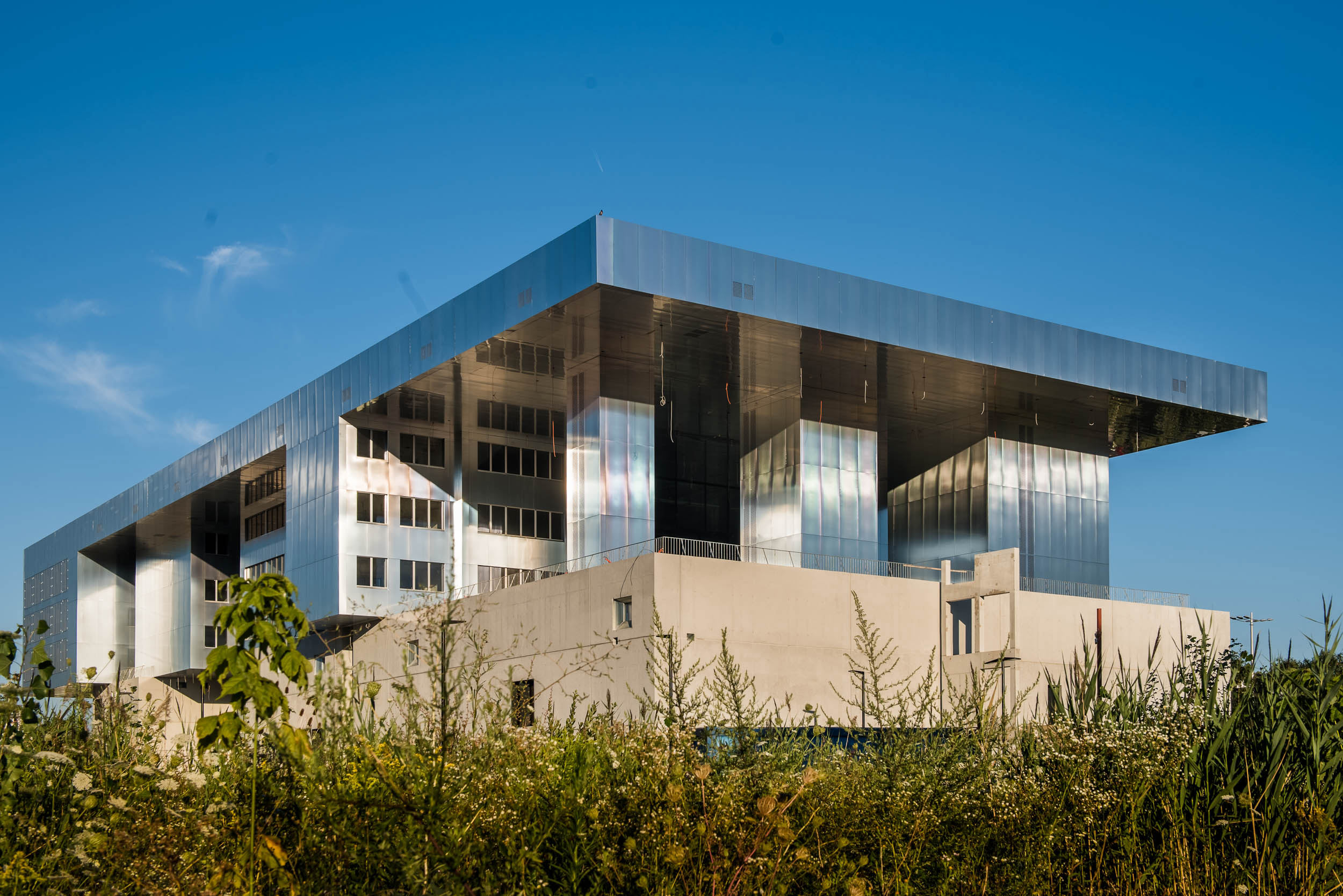
Designed as a regional centre for the development of entrepreneurs and its construction costs generously part-funded by European money, the Seecel Centre arrived long overdue and does not house its intended inhabitants. Such matters are best left for different articles as, here, we're concerned with the undeniable finery of this building's architecture and appearance. Holding space for accommodation, offices, communal collaboration, education and presentations, the five-floored building uses ultra-modern building materials and construction methods to make it low-energy, its great blocks of covered concrete, with glass windows set further back, echoing old fortifications. It was designed by Igor Franić who, in Croatia, is perhaps best known for the Museum of Contemporary Art in Zagreb and completed by him and his team at SZA / Studio za arhitekturu d.o.o.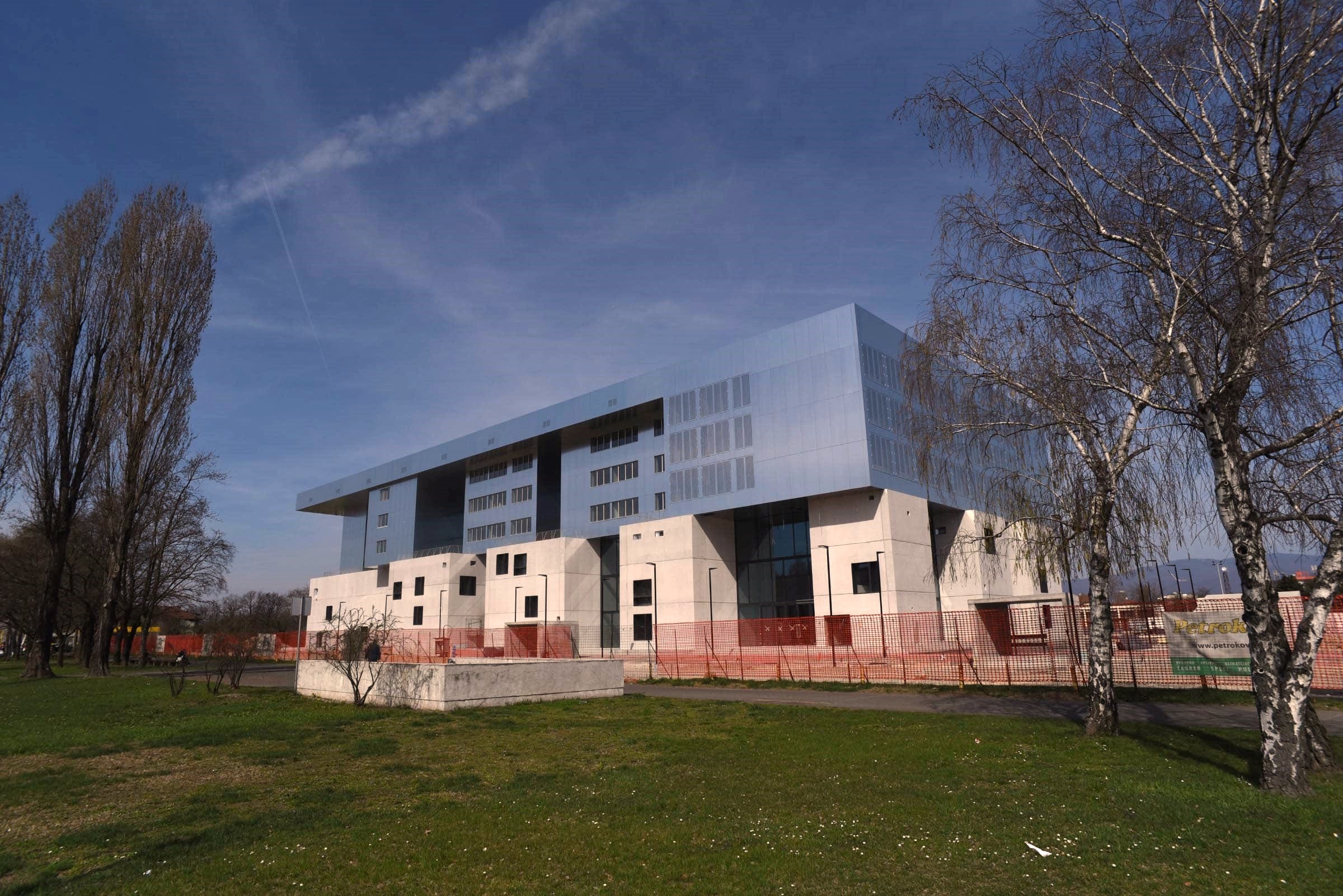 © Site Project d.o.o.
© Site Project d.o.o.
Trg Poljana, Šibenik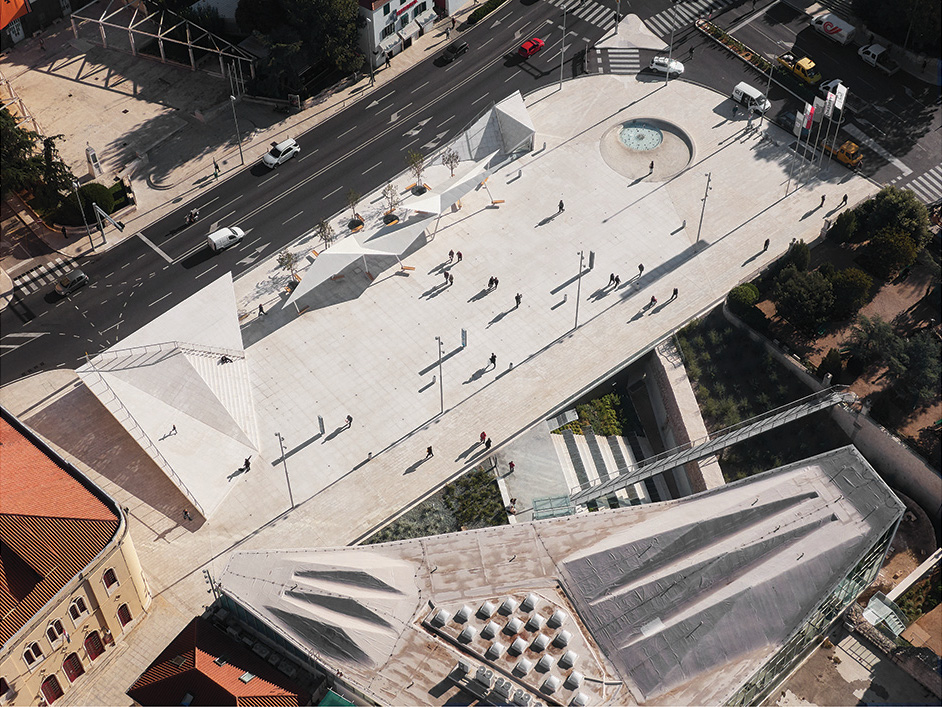
Not a small amount was asked of project architects Atelier Minerva from Dubrovnik in the task to create Trg Poljana in Šibenik. The site had long been earmarked for a much-needed, official town square – a place for events and public gatherings. But, the town was also woefully short on parking. By burying a multi-level car park beneath the open space, the architects successfully met both demands. Triangular shapes sit at an angle above shaded seating, echoing the inclines on the roof of the Juraj Šižgorić City Library opposite. Clever.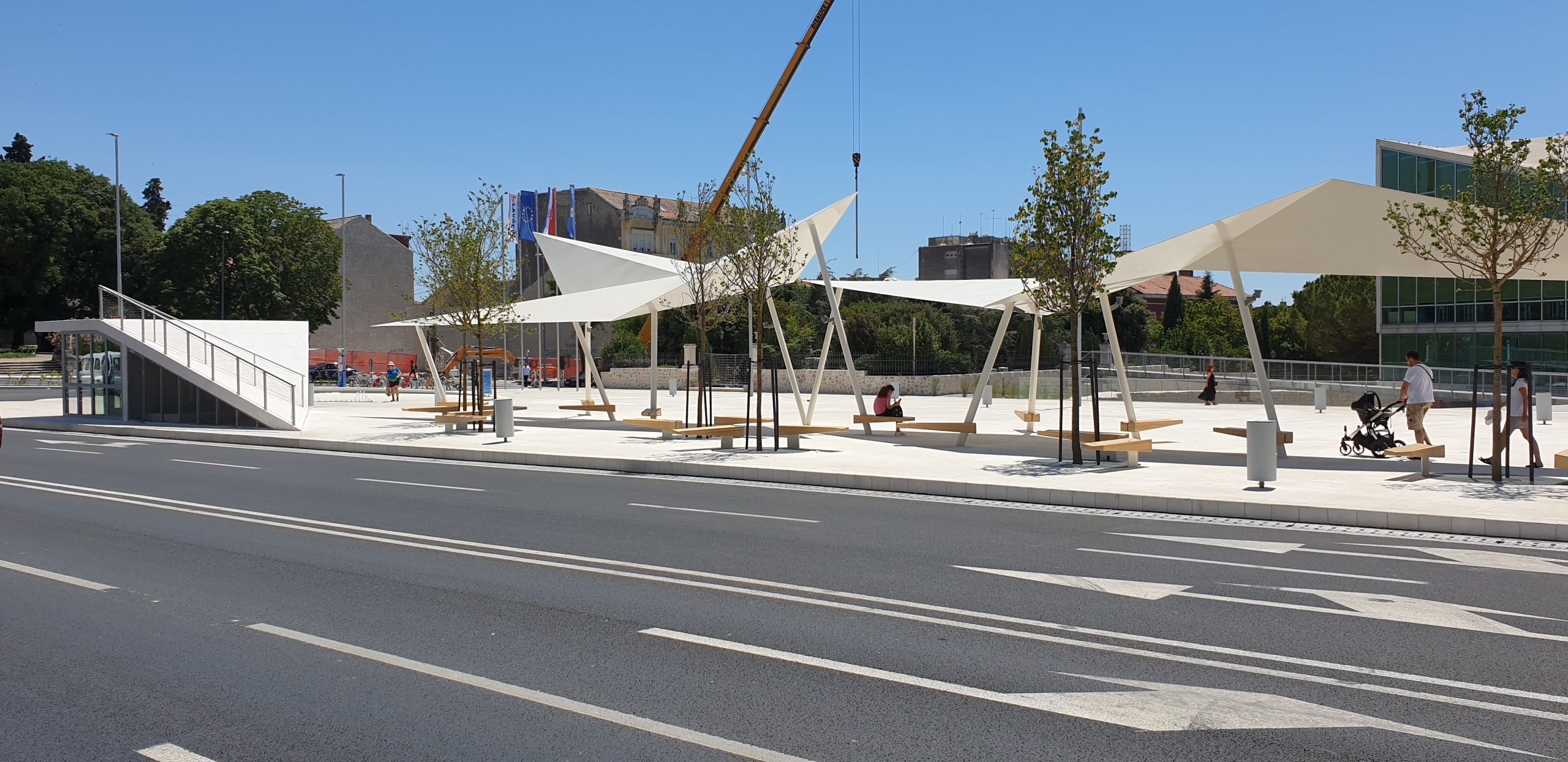 © Ervin Husedžinović / Eccos-inzenjering
© Ervin Husedžinović / Eccos-inzenjering
Homestead on Hartovski vrh, Žumberak, Zagreb County
A collection of multi-purpose rural buildings, Homestead and Meditation Centre on Hartovski vrh was commissioned and designed for use by the Buddhist Center Zagreb. Their aim was to relocate activities such as chan, yoga, meditation, healthy living and teaching to a peaceful retreat outside of the city. Architects Branimir Rajčić and Mariela Žinić began the project in 2015, with the completed site arriving in 2019. Modern building materials are used, but not so the striking collection seems out of place within a partially agricultural setting. The set of buildings includes a residential dwelling and a larger hall for meetings and activities, both of which use large windows to allow the light and nature to flood in. © Robert Leš
© Robert Leš
Square of Traditional Crafts, Varaždin
A tricky task was given to architects Studio Konntra – how to enliven and modernise a traditional old square in the centre of one of Europe's best-preserved Baroque Old Towns. They did this by constructing transportable kiosks to house small outlets for local artists and craftsmen that cater to visiting tourists who come to the square. When occupied during the day, the plain wooden interiors allows the crafts to take centre stage. But, after closing time, the outsides of the wooden doors are brightly coloured and adorned with paintings, a welcoming environment for residents to use at night.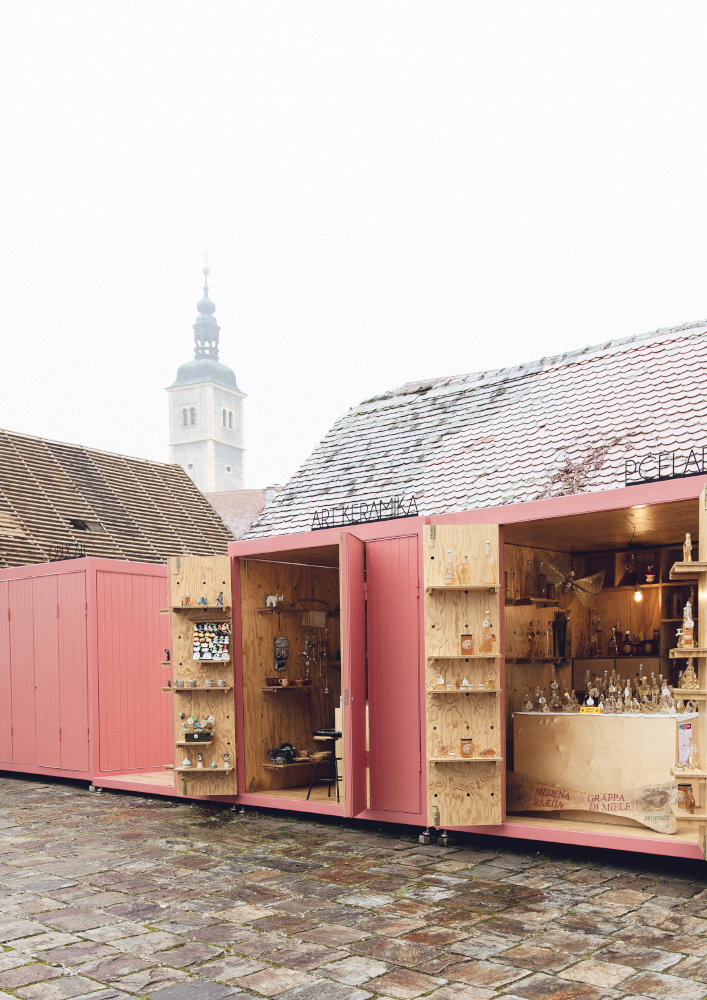 © Studio Konntra
© Studio Konntra
VIDEO: Family of Zadar Sheep Visit Shopping Mall, Looking for Woolmart?
February 5, 2021 – Visitors to a mall in Dalmatia were yesterday surprised to see their shopping trip shared by a family of Zadar sheep, who were filmed strolling beneath the logos of famous brands. The video became a big hit on social media
The people who inhabit Croatia's coastal region of Dalmatia like to take pride in the good things they have. And well they might. Their region is beyond-beautiful – a long stretch of idyllic coastline and islands, sat before pristine seas, with a spectacular mountain backdrop behind which a wealth of culture, tradition, nature and authentic Croatian cuisine lie.
Part of that cuisine is lamb. Dalmatia lamb is highly prized – indeed, indeed the lamb from Dalmatian island Pag, and that of the Lika region is protected at an EU-level tied to its place of origin. But, those are not the only places in Croatia that have fantastic lamb. Within many of Dalmatia's foothills, you'll find sheep and shepherds. Zadar sheep are just some of those who graze on grasslands around Dalmatia's cities, towns and villages. Well, usually they do.
Over recent days, one family of Zadar sheep quit the quieter areas on the edge of the city suburbs and descended on the town. They were caught on video taking a stroll around the car park of a popular mall on the edge of the city. Filmed in front of the familiar logos of Interspar and McDonalds, you can imagine they have just finished a round of shopping and are now heading back home.
Perhaps they imagined the mall to be a Woolmart outlet? We're not the only ones to wonder. The Zadar sheep family was incredibly popular yesterday on the Facebook site Dnevna doza prosječnog Dalmatinca. Views of the Zadar sheep gone shopping are approaching 10, 000 views. Over 2000 left comments, such as “They also go to Zara!” and "here's a lot of symbolism here."
It would seem that images of the shopping Zadar sheep stuck in people's minds throughout the day. In a later Facebook post on Dnevna doza prosječnog Dalmatinca, a supermarket shopping trolley was pictured abandoned by the traffic lights of a road junction elsewhere in Dalmatia. Some wondered in the comments section whether it could be that of the Zadar sheep, who had forgotten to return it to the mall after their shopping spree.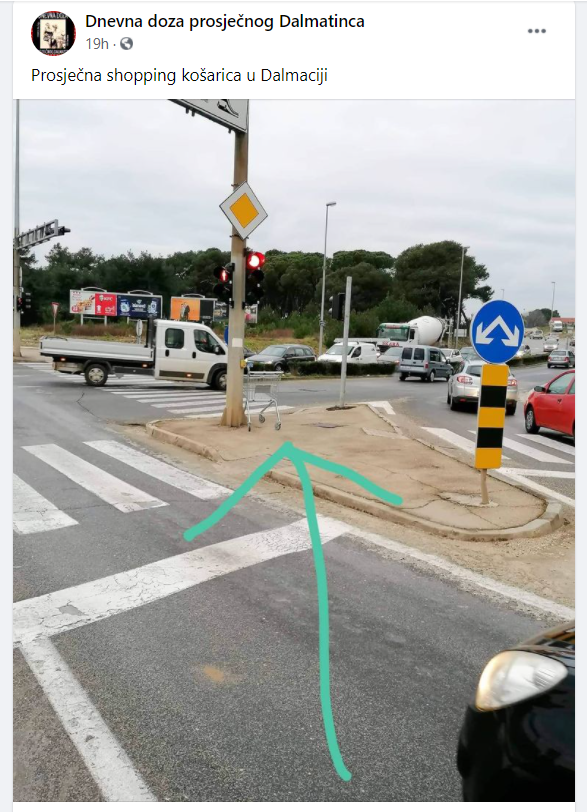 Dnevna doza prosječnog Dalmatinca Facebook screenshot
Dnevna doza prosječnog Dalmatinca Facebook screenshot
VIDEO: Stunning Aerial Footage of Dolphin Family in Zadar Archipelago
February 1, 2021 – The Adriatic might be too cold for us right now, but conditions are perfect for this dolphin family, spectacularly captured gliding through glacial, undisturbed waters by an overhead drone
The Adriatic might be too cold for us right now, but conditions are perfect for this dolphin family, spectacularly captured gliding through glacial, undisturbed waters by an overhead drone
The footage of the dolphin family was captured spectacularly by keen amateur drone photographer Davor Miljkovic. Davor, who is from Zapresic, usually puts his eye for aesthetics into website design – he works as a PHP website developer for Virtus dizajn in Lanište, Zagreb and as a freelance website developer. But, he is currently taking advantage of working remotely and was able to catch footage of the dolphin family during his off time.
“I live in Zapresic but my grandmother is from island Rava, near Zadar,” Davor told TCN on 1st February 2021, two days after he posted the video of the dolphin family to his Youtube channel. “So, we have a house here by the sea. My fiance and I spend part of the winter here and we are here all summer too.”
The Zadar archipelago (in Croatian Zadarski arhipelag) is an incredibly picturesque group of islands off the coast of the city of Zadar. In addition to island Rava, off which Davor saw the dolphin family, the archipelago also consists of the islands Dugi Otok, Galešnjak, Iž, Lavdara, Ošljak, Pašman, Rivanj, Sestrunj, Tun Veli, Ugljan, Vir, Vrgada, Zečevo and Zverinac.
The beautiful stretch of islands is usually very popular with summertime visitors. It would seem that it's also popular in wintertime with visitors who live in the sea. And, of course, people like Davor who are lucky enough to catch sight of them.
For the latest travel info, bookmark our main travel info article, which is updated daily.
Read the Croatian Travel Update in your language - now available in 24 languages
4.7 Magnitude Earthquake in Zadar Felt Across Dalmatia
November 1, 2020 – Northern Dalmatia has been hit with a strong tremor today, the earthquake in Zadar was estimated to have measured 4.7 on the Richter scale
A strong earthquake has this afternoon shaken the residents of north Dalmatia. The earthquake in Zadar occurred at 2.15 pm on Sunday 1 November. The epicentre of the earthquake in Zadar was 16 kilometres to the northwest of Posedarje municipality and occurred at a depth of 10 kilometers.
The earthquake in Zadar was felt across much of Dalmatia. Residents of Zadar County would have been settling down to Sunday lunch or preparing to visit local cemeteries on All Saints Day as the strong tremor struck. The duration of the earthquake was approximately four to five seconds.
Index media reported their readers had felt the tremor on the islands of Pag, Prvić and Iž, in the city of Split and even in Bihać in Bosnia and Hercegovina. The European-Mediterranean Seismological Centre were contacted by people from Gospić, Sveti Rok, Biograd na Moru, Knin, Solin, Omiš, and even Karlovac who felt the earthquake.
Today's Zadar earthquake is the latest in a series of hundreds of instances of seismic activity that have taken place in Croatia during 2020. The largest earthquake to have shaken the country in over one hundred years took place at 6:25 am on 22 March 2020. The epicentre of that earthquake was around seven kilometres tp the north-east of the centre of Zagreb and the earthquake was measured at a magnitude of 5.5. The Croatian capital and some of its surrounding villages are still dealing with the aftermath.
For the latest travel info, bookmark our main travel info article, which is updated daily.
Read the Croatian Travel Update in your language - now available in 24 languages.
Sibenik-Knin and Zadar Counties No Longer on Germany's Red List
October 1, 2020 - Sibenik-Knin and Zadar counties are no longer on Germany's red list for travel.
HRTurizam reports that last night, the German Robert Koch Institute revised the list of countries that are on the red list, that is, high-risk countries for travel during the coronavirus pandemic.
What is important to point out is that Sibenik-Knin and Zadar counties are no longer on the red list, so it is now possible to travel to those Croatian counties.
The following counties are still on the red list in Germany: Brod-Posavina, Dubrovnik-Neretva, Lika-Senj, Pozega-Slavonia, Split-Dalmatia, and Virovitica-Podravina.
Declaring an area at risk means that those returning from high-risk countries on holiday must be tested for coronavirus and remain in self-isolation until they receive a negative test result.
Recall, on September 29, the Slovenian government adopted changes to the countries on the lists unsafe for travel during the corona era.
"The Government took note of the Assessment of the Epidemiological Situation in the European Union and the Schengen Area, the Balkans and selected Third Countries, the Assessment of the Epidemiological Situation in the Countries and the European Commission's Re-open EU Recommendation, as well as the Criteria per 100,000 inhabitants by country prepared by the National Institute of Public Health. It assessed the professional justification of the restrictions from the Ordinance on ordering and implementing measures to prevent the spread of COVID-19 at border crossings at the external border, at checkpoints at internal borders, and in the Republic of Slovenia and decided that these restrictions should continue to apply," said the Slovenian Government on its website.
Thus, the red list includes 16 EU Member States and the Schengen area, with only administrative units with a poor epidemiological picture and 114 third countries with an uneven distribution of infections.
Regarding Croatia, the red list now includes Brod-Posavina, Dubrovnik-Neretva, Lika-Senj, Pozega-Slavonia, Sibenik-Knin, Split-Dalmatia, Virovitica-Podravina and Zadar counties.
The orange list now includes the Croatian counties bordering the country. This means that from these areas, Slovenia can be entered with a negative coronavirus test and without having to quarantine.
Serbia and Poland are on the green list again, together with Cyprus, Latvia, Lithuania, Liechtenstein, and Finland, while neighboring Italy has been withdrawn from the green list.
For the latest travel info, bookmark our main travel info article, which is updated daily.
Read the Croatian Travel Update in your language - now available in 24 languages
Split-Dalmatia County Extends Coronavirus Measures until September 24
September 10, 2020 - Split-Dalmatia County extends coronavirus measures until September 24 as the county continues to record the most cases in Croatia.
On Wednesday, necessary epidemiological measures introduced on August 27 for Split-Dalmatia County have been extended until September 24, 2020, by the Civil Protection Headquarters of the Republic of Croatia.
On August 31, the Civil Protection Headquarters of the Republic of Croatia, at the suggestion of the Split-Dalmatia County Headquarters, revoked the decision to suspend the work of gyms, fitness centers, and other forms of recreation, noting that special attention will be paid to training and sports and recreational recommendations, activities in closed sports facilities, but also other prescribed epidemiological measures.
Necessary epidemiological measures are:
- mandatory face masks or medical masks indoors in catering establishments until food, drinks and beverages are consumed;
- a maximum of 50 people can be present at wedding ceremonies;
- a maximum of 20 people may be present at other private ceremonies and celebrations;
- a maximum of 50 people can be present at funerals, without maintaining gatherings, and condolences to the bereaved must not be expressed through close contact;
- at all social gatherings (events, performances, masses, rituals, exhibitions and other social gatherings), it is obligatory to adhere to all prescribed epidemiological measures, and if they are held indoors, it is obligatory to wear face masks or medical masks and maintain a physical distance of at least 2 meters;
- organizers of all social gatherings and owners of catering facilities are obliged to perform intensified supervision of compliance with the prescribed epidemiological measures;
- sports competitions can be held only without the presence of spectators;
- visits to and departures from nursing homes and other social welfare institutions are prohibited, and it is recommended that work be organized in shifts, whenever possible.
After the number of new coronavirus patients jumped to 341 on Wednesday, and Zadar County counted 18, at the suggestion of the local Civil Protection Headquarters, the Chief of National Headquarters and Minister of the Interior, Davor Bozinovic, extended some measures in Zadar County until November 1.
Until then, there is a ban on visits to nursing homes, holding organized entertainment gatherings on boats, and wedding ceremonies with more than 50 people.
It was added that "a maximum of 25 people can be present at other private ceremonies, celebrations, and gatherings".
For the latest travel info, bookmark our main travel info article, which is updated daily.
Read the Croatian Travel Update in your language - now available in 24 languages
New Travel Warning: Germany Puts Zadar County on the Red List
September 3, 2020 - In the latest corona travel news, Germany puts Zadar County on the red list of risky countries.
Index.hr reports that the German Government has added Zadar County to the new list of epidemiologically risky areas and warned its citizens not to travel to the area due to the increase in the number of COVID-19 cases.
The warning does not constitute a ban on travel to these areas
On Wednesday, the German Robert Koch Institute added Zadar County to the list of risky areas, in addition to the popular tourist destinations of Sibenik-Knin and Split-Dalmatia counties, the dpa agency reported.
The warning also does not constitute a travel ban on these areas, but suggests passengers reconsider their plans. In addition, it allows passengers to cancel trips at no additional cost.
Germany considers countries or regions where 50 or more cases of infection have been reported in seven days to be high-risk areas
Germany considers high-risk areas to be countries or regions where 50 or more cases of new coronavirus infections per 100,000 inhabitants have been reported in seven days.
Declaring an area risky means that those returning from vacation must be tested for coronavirus and remain in self-isolation until they receive a negative test result.
On August 20, the German Foreign Ministry issued a warning for travel to Sibenik-Knin and Split-Dalmatia counties due to the increased number of new coronavirus infections.
Who has put Croatia on the red list so far?
So far, Croatia has been put on the red list by Austria, the UK, Slovenia and Cyprus.
Unlike those countries that declared the whole of Croatia a red zone, Germany put only two Dalmatian counties in the red, which yesterday they extended to the third - Zadar County.
For the latest travel info, bookmark our main travel info article, which is updated daily.
Read the Croatian Travel Update in your language - now available in 24 languages
Join the Total Croatia Travel INFO Viber community.
Infrastructure Projects for Islanders in Zadar County Continue
As Morski writes on the 14th of May, 2020, despite the coronavirus pandemic which has paralysed a significant part of economic activities across not only Croatia but the world, work on infrastructure projects on the islands of Zadar County is progressing according to plan.
On that occasion, Zadar County Prefect Bozidar Longin, accompanied by his associates, visited the construction sites of port infrastructure projects on the islands of Pasman and Ugljan - the new ferry port in Tkon, the rehabilitation of the waterfront in Mrljane, a fishing port in Vela Lamjana and the re-doing of the promenade and the Artina beach in Kali.
The Zadar County Port Authority is building a new ferry port in Tkon, which carries a total value of 45 million kuna. The third phase of construction, which is now underway, is worth about 30 million kuna alone, and this is the first port infrastructure project in the Republic of Croatia to be financed from European Union funds through the Competitiveness and Cohesion operational programme.
''The new ferry port will mark a significant step forward in the quality of transport for all residents and guests of the island of Pasman. The works should be completed by the end of 2021, with summer breaks included, and it is very important that there are no interruptions during the coronavirus crisis. Everything has been being carried out in full compliance with all of the prescribed epidemiological measures,'' said Prefect Bozidar Longin.
''This is one of the key development projects for the entire island of Pasman. With the new ferry port, we'll significantly raise the standard of the service provided, which will certainly be an additional contribution to the quality of life of the island population and the development of tourism,'' added the mayor of Tkon, Goran Muscet, who praised the level of cooperation with the Zadar County Port Authority and the contractors engaged in the work.
''In the new Tkon ferry port, a loading and unloading area and a boarding station will be built, a plateau of the pier that enables the loading and unloading of vehicles, an underwater culvert for sea water circulation between the outer and inner waters and a plateau for the boarding area and the car park,'' added Davor Skibola, the director of ZLU Zadar which, in addition to the works taking place in Tkon, is also implementing a European Union project to upgrade the port of Sali in the amount of 56.8 million kuna.
On the island of Pasman, the Zadar County Port Authority is also doing up the port of Mrljane, which is co-financed by the Municipality of Pasman and two national ministries - that of Maritime Affairs, Transport and Infrastructure, and the Ministry of Regional Development and EU Funds.
''The works started in 2019, and the total value is 4.2 million kuna. With great cooperation with Zadar County and the ministries of the Government of the Republic of Croatia, we're continuing this development cycle and creating new preconditions for the well-being of our residents,'' said Kresimir Cosic, Mayor of Pasman.
Bozidar Longin, accompanied by Kali's Marko Kolega, visited the works taking place at the fishing port in the bay of Vela Lamjana. It's worth noting that with the help of European Union and national funds, the fishing ports in oth Kali and Gazenica will be modernised and upgraded. The works in Kali have been going on for a little over a year now, and the public procurement procedure for the works in Gazenica is expected to be completed soon. Both projects are being implemented by the Zadar Port Authority, and are worth almost 60 million kuna.
''We're leading in the Adriatic sea in catching fish, but also in fish farming, and we bear the name of the Croatian county which fishes the most with very good reason. We want to take an additional step forward in improving the conditions for our fishermen, so we started building more modern infrastructure. With concrete examples, we're supporting the further development of fishing here, which has a long tradition in Zadar County, and is especially important to our islanders,'' emphasised the Zadar County prefect.
In addition to the fishing port, several other infrastructure projects are being implemented in Kali. Works on the promenade and Artina beach worth 2.7 million kuna are also in progress.
''With the project of the Artina promenade, we'll arrange a car park, a rest area for cyclists, and a promenade with a green belt and ecological lighting. This will be followed by the 'doing up' of the beach where we'll set up smart benches, playgrounds for children, and a ramp for the disabled. The works should be completed by July, and we're financing these works with our own funds and with the help of the Ministry of Regional Development, the Ministry of Maritime Affairs, Transport and Infrastructure, and Zadar County,'' said Marko Kolega, who announced that the construction of a roundabout in the area of Batalaza this autumn, which will be worth 3.9 million kuna.
Make sure to follow our lifestyle page for much more.
Construction Started at Korlat Wind Farm in Zadar County
The single largest current investment by HEP, Croatian national electricity provider, is the construction of the Korlat wind farm near Benkovac in Zadar county.
The planned connection capacity of the wind farm will amount to 58 MW (18 turbines of 3.6 MW each), which will make it the biggest wind farm in Croatia, once it's finished. It is also expected that the annual farm will generate around 170 GWh, which makes up around one percent of the total yearly electricity consumption in Croatia and is enough to supply more than 50,000 households with electricity. HEP reported that the total value of the investment is more than 500 million kunas.
A large German company specialized in the design and manufacture of the wind turbines will be in charge of constructing and delivering the turbines themselves. On the other hand, the construction of the infrastructure for the farm, as well as the grid connection, will be performed by several Croatian companies. The plan is for the Korlat wind farm to be fully operational by August 2020.
Zadar County Prefect Božidar Longin said at the ceremonial opening of the construction, attended by Prime Minister Andrej Plenković, that this is the further proof that their County is committed to green energy, which is why they invested into the Atlases of wind and sun energy. Frane Barbarić, the President of HEP’s Management Board, added that HEP is preparing more wind power plant projects, which are being developed as part of the renewable scenario of development until 2030.
By 2030, HEP has plans to produce 350 MW in their wind farms, and the same amount of electricity in solar power plants. Those two renewable green energy sources combined will produce the same amount of electricity as Krško Nuclear Power Plant. One of the solar power plants considered within that plan would be constructed right next to the Korlat Wind Farm, which would make Korlat a unique location for green energy generation in Croatia and beyond.


